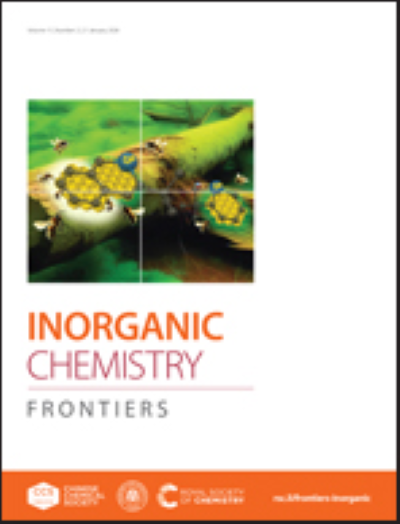One-dimensional Ti3C2Tx MXene nanofiber anchored ultrafine iridium nanocrystals for alkaline hydrogen evolution
IF 6.4
1区 化学
Q1 CHEMISTRY, INORGANIC & NUCLEAR
引用次数: 0
Abstract
The development of cost-effective hydrogen evolution reaction (HER) catalysts is crucial for the large-scale production of green hydrogen through water electrolysis. Herein, we present a strategy for fabricating a highly efficient HER catalyst where iridium (Ir) nanocrystals (NCs) are dispersed on one-dimensional MXene nanofibers (Ir@NF 550). The MXene nanofiber (MXene-NF) is reconstructed from the MXene nanosheet accompanying the formation and extension of cracks, which avoids the self-stacking of MXene and stimulates the dispersion of Ir metal catalysts. The existence of electron transfer and the strong electrostatic interaction between the Ir species and the conductive MXene substrate endows the as-prepared catalyst with superior HER activity in the alkaline media, with an ultralow overpotential of 15.8 mV to reach a current density of 10 mA cm-2, remarkably high mass activity about 4.8-fold greater than the commercial Ir/C catalyst, and an excellent long-term stability. As evidenced by the density functional theory calculations, MXene-NF supported Ir NCs exhibit a hydrogen adsorption for free energy (ΔGH* = -0.35 eV) closer to thermodynamic neutrality, significantly boosting the catalytic kinetics. This work introduces a facile strategy on design of highly active MXene-based catalysts with a low noble-metal loading.一维Ti3C2Tx MXene纳米纤维锚定超细铱纳米晶体用于碱性析氢
开发高性价比的析氢反应催化剂是水电解大规模生产绿色氢的关键。在此,我们提出了一种制造高效HER催化剂的策略,其中铱(Ir)纳米晶体(nc)分散在一维MXene纳米纤维上(Ir@NF 550)。MXene纳米纤维(MXene- nf)是在MXene纳米片的基础上,通过裂缝的形成和延伸重建而成,避免了MXene的自堆积,促进了Ir金属催化剂的分散。Ir与导电MXene衬底之间存在电子转移和强静电相互作用,使得所制备的催化剂在碱性介质中具有优异的HER活性,其过电位为15.8 mV,电流密度为10 mA cm-2,质量活性比商用Ir/C催化剂高4.8倍,并且具有优异的长期稳定性。密度泛函理论计算表明,MXene-NF负载的Ir NCs对氢的自由能(ΔGH* = -0.35 eV)的吸附接近热力学中性,显著提高了催化动力学。这项工作介绍了一个简单的策略,设计高活性的mxene基催化剂与低贵金属负载。
本文章由计算机程序翻译,如有差异,请以英文原文为准。
求助全文
约1分钟内获得全文
求助全文
来源期刊

Inorganic Chemistry Frontiers
CHEMISTRY, INORGANIC & NUCLEAR-
CiteScore
10.40
自引率
7.10%
发文量
587
审稿时长
1.2 months
期刊介绍:
The international, high quality journal for interdisciplinary research between inorganic chemistry and related subjects
 求助内容:
求助内容: 应助结果提醒方式:
应助结果提醒方式:


